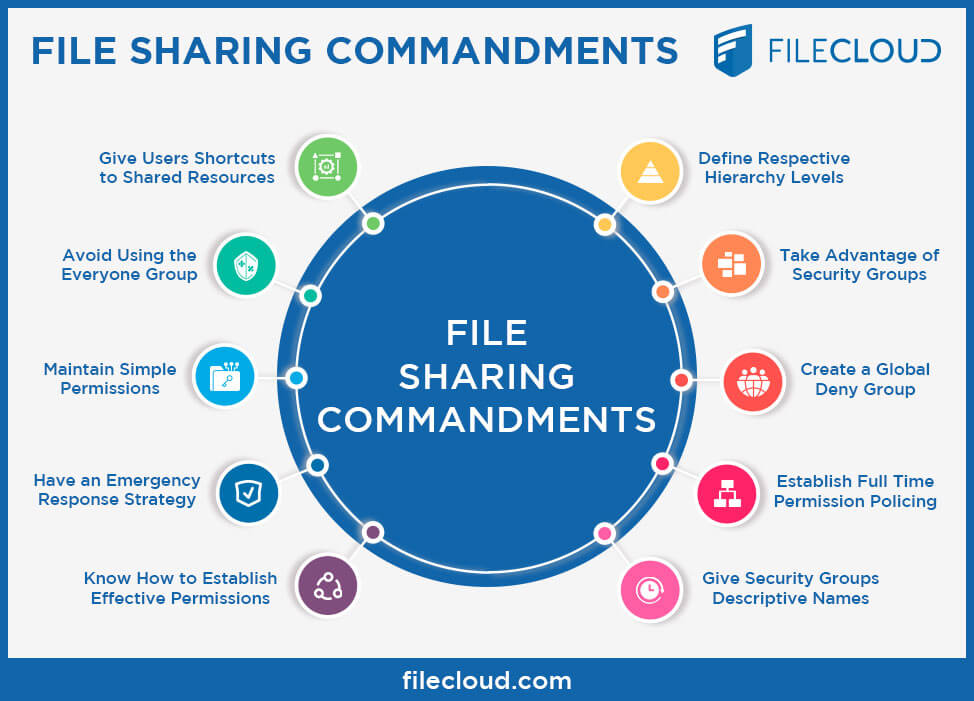
If you keenly reviewed all cloud services and their corresponding impacts on enterprises, EFSS would arguably be among the top revolutionary solutions. Before enterprises discovered it, the business scene was nothing close to what it is today.
With 21.3% of employees struggling to search and locate files even on standard PCs, productivity was an issue for both large and small businesses. Of course, this seemed normal then. But, if you analyzed the whole setup in retrospect after application of EFSS, you’ll notice major inefficiencies in both time and resource use.
Finding a single file, on average, took 18 minutes. This translates to half a day dedicated to searching and retrieving information for every worker. So essentially, a week or 5 working days would actually be two and half days of actual task handling, while the rest would be devoted to mining and distributing data.
Although cloud-based file sharing took some time to catch up, it has largely been a welcome tool in all types of enterprises. It’s now possible to coordinate information between a client in Chicago and a worker based in London.
Due to varying needs, file sharing solutions have since diversified, and businesses are now able to choose from multiple alternatives. While some are simply alternatives to distributing information online through FTP, others are used in tandem with third-party solutions to provide a collaboration suite that collectively facilitates file editing, review, versioning, approval, commenting and sharing.
Currently, an average business is utilizing 171 collaboration apps and 57 file sharing solutions. The proponents of this system claim that it helps enterprises capitalize on the services’ individual strengths. But the truth of the matter is that such a myriad of similar apps introduces complications in the overall IT infrastructure. Besides triggering increased security vulnerabilities, it misaligns the database architecture with enterprise goals.
 File Sharing Commandments
File Sharing Commandments
So, to help you achieve effectual and secure file sharing, here are 10 critical rules your organization should follow:
- Maintain Simple Permissions
Of course, you can develop tens of groups to manage shared files by granting distinct permissions at separate levels. While this is arguably much more secure, it complicates the whole structure for all employees, occasionally resulting in immense inefficiencies.
Instead of this system, consider using a much simpler approach that helps shared file owners figure out their way around the system as they share the files. Otherwise, they may end up blindly sharing files with unauthorized users.
- Take Advantage of Security Groups
Most organizations are composed of several departments, each with its own group of employees handling similar tasks. They keep sharing the same types of files back and forth in their regular work duties. While each individual uses a distinct user account, employees in one department typically have the same level of security clearance.
So, instead of repeatedly going through all the files to award individual user permissions, do this at the security group level. A set of users in the same security group will have similar file permissions across the board.
- Give Security Groups Descriptive Names
If you belong to a large organization, you could end up dealing with tens or hundreds of security groups. Recalling individual permissions, therefore, becomes challenging, forcing you to repeatedly waste time to review several groups’ privileges each time you need to add a new user or restructure the system.
A thoughtful way to work around this would be awarding names that describe each group’s permissions. This gives you a direct mapping of individual privileges, consequently making life much easier.
- Define Respective Hierarchy Levels
Only governmental organizations award distinct hierarchy levels to each employee at the recruitment stage. Others mostly operate under assumed levels, consequently complicating the whole process of awarding file permissions.
So make an appointment with the human resource department to define respective hierarchy levels for each user. The resultant structure should subsequently be approved by the company executives before final implementation.
- Know How To Establish Effective Permissions
Establishing the organization structure and the corresponding hierarchy level for each employee is one thing. Interpreting this and awarding requisite permissions is a separate process altogether. It could be very confusing, especially at the lower half, where multiple users may be on the same level but with separate job duties.
To effectively establish requisite permissions for each user, compare the hierarchy with respective job duties and descriptions. This should help you determine security clearance levels that should be mirrored by the permissions.
- Avoid using The Everyone Group
In most systems, the Everyone group comes with full file control permissions by default. Therefore, to avoid potential multiple security vulnerabilities, avoid using the group. Instead, use an authenticated users group for universal file sharing.
- Create a Global Deny Group
Although it may be rare, you may occasionally need to quickly block off a user from all the resources in the system. However, this may not be so simple especially if you have multiple servers and numerous file shares, with many users awarded permissions for randomly scattered files.
With a global deny group, however, you’ll be able to conveniently deny resource access across the board by simply adding a user.
- Establish Full Time Permission Policing
With time, group administrators with senior privileges may start modifying shared file permissions and end up granting too many users full control. While this may be done to help others users share files freely, it substantially increases the risk of a potential breach.
So you may need to actively police permissions you’ve awarded by keeping track of them through a spreadsheet.
- Have an Emergency Response Strategy
Even with a solid security framework, it’s impossible to guarantee 100% safety of the data. You have to be prepared for a possible infiltration or data loss by developing an effective emergency response strategy.
A good way to do this is maintaining real-time backups, complete with shared file permissions on separate servers.
- Give Users Shortcuts To Shared Resources
All things considered, the primary reason why organizations are leveraging EFSS is the allure of improved efficiency. Instead of leaving it off at shared resources, you could make access easier for users by giving them centrally managed shortcuts.
Conclusion
Your ability to follow through with these guidelines ultimately depends on your EFSS user friendliness and overall features. Get in touch with us today to take advantage of a well-designed interface and extensive system features.
Author: Davis Porter

By Team FileCloud